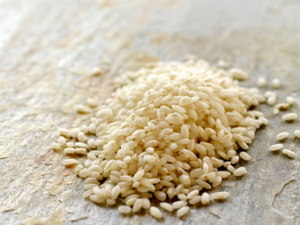How to Make My Rich Creamy Risotto?
Welcome my beautiful, strong and sexy Self-Care Goddess to my blog post. In this post I will be sharing with you my rich creamy risotto obsession. I will talk about the potential harm in buying non-organic arborio rice. Also, share with you some fun facts about this amazing main dish on every Italian restaurant menu.
Nutritional Rice Facts

Rice is a cereal grain that comes in more than 40,000 varieties of shapes, sizes, colours, texture and aroma. It is an easily grown versatile grain that feeds over half of the world’s population. It is also used in pet food, cosmetics, personal care products, and a great option as a gluten-free alternative.
Some of the nutritional benefits of rice include, but not limited to:
- High amount of carbohydrates, moderate protein and negligible amounts of fat
- Rich in minerals like calcium, iron, sodium, potassium, manganese, selenium, and copper.
- Rich in B3, B5, and B1 vitamins.
- Lower levels of fat, cholesterol, and sodium help prevent obesity
- Controls hypertension.
- Rice bran helps to prevent skin aging.
- Acts as a diuretic, which helps to eliminate toxins from the body.
- Boosts cardiovascular health
- Relieves IBS because it’s a low FODMAP food
- Its resistant starch helps the growth of useful gut bacteria, which promotes health bowel movements
- Insoluble fiber content helps to relieve constipation.
Should you avoid white rice?
I believe that you should avoid conventionally grown white rice, but I don’t agree recommending to avoid it altogether for everyone. Conventional white rice easily absorbs arsenic from the contaminated soil that it is grown in. Arsenic is a toxic heavy metal that can cause havoc to your body and especially your brain.
This is why I recommend choosing an organic, non-GMO brand of arborio rice. From my own personal experience, going gluten-free was extremely difficult for me, but likely I had white rice to help me make the transition.
Having said this, wild rice is proven to be more nutrient-dense than its white counterpart, but it definitely does not make a creamy risotto.
So I suggest you use wild rice and other more nutrient-dense types for dishes other than risotto.
The History of Risotto

Rice was first introduced to Sicily by the Arabs in the 14th century B.C. This short-grain rice is now a staple food due to the ideal humid climate in Italy. Today, Milan takes great pride in having invented the most popular Italian risotto, Risotto Alla Milanese. Thanks to where it’s situated in the Po Valley, where the bulk of Italian rice is grown.
Traditionally, risotto is made up of four basic ingredients: sauteed seasonal vegetables, broth, seasonings, and arborio rice. But can also be made with seasonal fish and meats. It is usually a main course but can also be served as an appetizer.
How to make a rich, creamy Risotto?

Well, if we want to get technical it’s the cooking process that provides the creaminess. More specifically, the retention of the rice starch during the cooking process binds the grains together making a creamy compound.
Nonetheless, it is relatively easy to achieve this, you just need a lot of patience. I must warn you, it is tempting to hastily add the broth, but it’s imperative that you continue to slowly stir the rice.
Patiently, waiting until the rice absorbs all the broth before adding another ladle.
The secret to its rich, creamy texture is to also add in cheese. I avoid all cow products but will add Pecorino cheese to my risotto, to achieve that creaminess and great taste.
Endless Variations
The variations of making risotto are endless. My suggestion is to choose your favourite vegetable that is in season, and add that as the main companion to your risotto. I prefer adding Portobello Mushrooms in the autumn and winter seasons.

Check out my favourite risotto with portobello mushrooms recipe, here.

